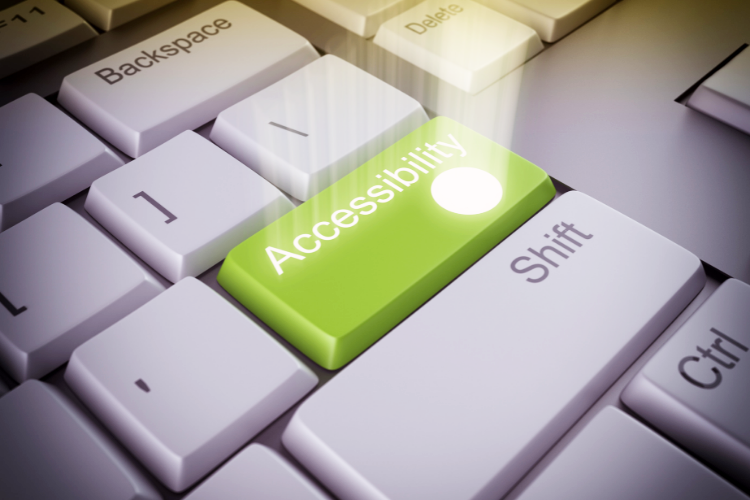Spotlight on accessibility tools, features and resources

Digital accessibility is essential for some, useful for all. Being aware of what is new and available to you and others will ensure our teaching and learning environment is as inclusive as it can be.
This blog post spotlights 8 useful accessibility tools, features and resources, some of which the University has recently subscribed to and invested in.
1. Convert files to alternative formats
We now have an institutional subscription to SenusAccess. This web-based tool allows you to convert documents into alternative accessible media on demand. Use it to create digital braille, a text file or ebook from a PDF, for example. Other accepted file types include image-only PDFs, JPGs and PowerPoints.
Find out more about SenusAccess.
2. Check the accessibility of your course content
Blackboard Ally is coming. This course content accessibility service sits in Moodle. It assesses the materials on your module page and returns an accessibility score. The tool tells you what the issues are and how you can fix them. It also gives students the option to download module materials in different formats.
Find out more about Blackboard Ally.
3. Self-assess your digital capabilities
Another new service is the Jisc discovery tool. The tool allows you to explore your digital capabilities in various areas. Answer the accessibility and inclusion question set in the tool to identify your current strengths and areas for development, then use the recommended resources provided to you by the tool to upskill.
Find out more about the Jisc discovery tool.
4. Generate foreign language captions
Panopto and Caption.Ed have just added support for more languages to their products. This means staff and students can now generate captions that match the language of delivery in a session. We expect this will be particularly useful for people in the School of Modern Languages, though others may find it useful too.
Find out more about captioning in a foreign language.
5. Be aware of accessibility features in core systems
A Moodle upgrade will take place this summer and introduce two accessibility improvements. There will be a clearer focus on selected links and course editors will have the option to classify an embedded image as ‘decorative only’. Various other feature enhancements will be introduced.
Learn more about the summer upgrade of Moodle.
6. Complete the accessibility fundamentals course
Microsoft’s free Accessibility Fundamentals course is well worth undertaking. There are 4 modules: introduction to disability and accessibility, Microsoft accessibility features and tools, creating accessible content with Microsoft 365 and digital accessibility. Take the course at your own pace and earn badged accreditation.
Start the Microsoft Accessibility Fundamentals course.
7. Get accessibility advice from a chatbot in Teams
Future Worx’s free Accessibility Bot is an app you can add into your Microsoft Teams. It is definitely worth giving a go. The bot helps you understand how Microsoft tools can be more accessible and better fit a person’s specific needs. Ask it questions in a typed chat or select topics from the main menu to get answers on demand.
Find out more about the Accessibility Bot.
8. Make the most of tips and tricks from champions
Take a look at the tips and tricks video series created by Microsoft’s Accessibility Champions. It showcases a range of features in Windows 10, Office 365 and Microsoft Teams. With such a wide array of features covered, you are bound to learn something new. You may even start to leverage a feature you were not aware of.